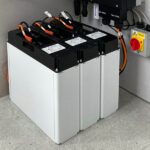Running an energy or utility company is like keeping a massive engine running smoothly—every part needs to hum just right. You’re juggling rising costs, tight regulations, and the push for sustainability. Sound familiar? That’s where ISO 50001 comes in, a standard that helps you manage energy smarter, not harder. But why should a busy utility company care about ISO 50001? And how do you make it work without derailing your operations? Let’s break it down and see how this standard can light up your business.
Why Energy Efficiency Isn’t Just a Buzzword
Imagine this: your power plant’s running at full tilt, but your energy bills are eating into profits. Or maybe your customers are demanding greener practices. ISO 50001 is the international standard for energy management systems, designed to help you use energy more efficiently. It’s like a GPS for navigating the complex world of energy use, guiding you toward savings and sustainability.
Why does it matter? Energy costs aren’t going down anytime soon, and regulators are cracking down on emissions. Plus, customers—whether they’re households or industries—want providers who care about the planet. ISO 50001 gives you a framework to cut waste, lower costs, and build a reputation as a forward-thinking company. Who wouldn’t want that?
What Sets ISO 50001 Apart?
You might be thinking, “We already track energy use. Why bother with ISO 50001?” Great question. Unlike basic energy audits, ISO 50001 is a full-on system that weaves efficiency into your company’s DNA. It’s not just about checking meters; it covers planning, monitoring, and improving energy performance across the board. Think of it like upgrading from a paper map to a real-time navigation app—it’s smarter and more connected.
The standard encourages everyone to pitch in, from executives to engineers. That’s a game-changer. When your team’s on board, you uncover savings you didn’t even know existed. I once heard about a utility company that used ISO 50001 to spot a leaky compressor system, saving them thousands monthly. That’s the kind of win we’re talking about.
The Core of ISO 50001: Smarter Energy Management
So, what’s ISO 50001 all about? It’s a structured approach to managing energy. You start by assessing where you use energy—maybe it’s boilers, turbines, or even office lighting. Then, you set goals to cut waste, track progress, and keep improving. It’s like tuning a guitar: small tweaks lead to perfect harmony.
Here’s what it covers:
- Energy review: Map out where energy flows in your operations.
- Performance indicators: Use metrics to measure efficiency.
- Action plans: Set clear, achievable goals.
- Monitoring: Track results and adjust as needed.
- Leadership: Get buy-in from the top to drive change.
Sounds simple, doesn’t it? But it takes commitment to make it work. You can’t just slap on a policy and walk away. ISO 50001 thrives on action.
Your Journey to ISO 50001 Certification
Alright, let’s talk certification. It’s not required, but it’s like a badge that tells stakeholders you’re serious about efficiency. The process starts with understanding ISO 50001’s requirements. Then, you build your energy management system, document it, and train your team. Finally, a third-party auditor (like Bureau Veritas or TÜV SÜD) checks your work.
Here’s the roadmap:
- Gap analysis: Compare your current practices to ISO 50001 standards.
- Energy planning: Identify savings opportunities and set goals.
- Documentation: Create policies, energy reviews, and records.
- Implementation: Roll out the system across your operations.
- Audit: Pass the external audit, and you’re certified.
It’s a marathon, not a sprint. One utility manager I know likened it to planting a garden—lots of prep work, but the harvest is worth it. Expect some bumps, but keep your eyes on the prize.
Where Companies Trip Up (And How to Stay Steady)
Here’s the real talk: ISO 50001 isn’t a walk in the park. Some companies stumble because they treat it like a one-off project. Spoiler alert—it’s ongoing. Your energy system needs regular check-ins to stay effective. Another pitfall? Skipping employee buy-in. If your team sees ISO 50001 as extra work, you’re in trouble. Get them involved early—share the “why” and let them suggest ideas.
I heard about a power plant that rushed certification to win a government contract. They got the certificate but slacked off afterward. Result? Energy costs crept back up, and they lost credibility. Lesson learned: commit for the long haul, not just the shiny label.
The Heart of Efficiency: People Power
Let’s pause for a moment. Energy management isn’t just about numbers; it’s about people. Your engineers, operators, and managers—they’re the ones who make efficiency happen. ISO 50001 empowers them to think smarter about energy. That’s a big deal, isn’t it? Knowing your team’s efforts are cutting costs and helping the planet?
I once met an operator who was proud his ISO 50001-driven tweaks reduced his plant’s carbon footprint. He said it felt like leaving a better world for his kids. That’s not just a job; that’s a legacy. When your company embraces this standard, you’re building something bigger than profits.
Tools to Simplify ISO 50001
You don’t have to go it alone. Tools like EnergyCAP or Schneider Electric’s EcoStruxure can track energy use and generate reports. Training programs from ENERGY STAR or ISO itself can bring your team up to speed. And don’t overlook simple solutions—like a shared spreadsheet for tracking energy goals. Sometimes, low-tech works just fine.
Here’s a tip: start small. Focus on one area, like HVAC systems, and scale up. It’s like learning to cook—you nail a simple dish before tackling a feast.
The Payoff: Why ISO 50001 Shines
So, why bother with ISO 50001? Because it delivers. Certification can unlock contracts, especially with eco-conscious clients like governments or multinationals. It slashes costs—less energy waste means more money in your pocket. And it boosts your brand. Customers love companies that walk the sustainability talk.
Plus, it’s global. Whether you’re in Houston or Hanoi, ISO 50001 speaks the same language. That’s huge if you’re expanding overseas. And let’s not forget the feel-good factor—knowing your company’s making a dent in climate change? That’s something to brag about.
Clearing Up ISO 50001 Myths
Let’s bust some myths before we move on. Some folks think ISO 50001 is only for massive utilities. Nope. Whether you’re a small water treatment plant or a giant power provider, it fits. Another misconception? “It’s too costly.” Sure, you’ll spend on training and audits, but the savings from efficiency pay off fast.
And no, it’s not just paperwork. ISO 50001 is about real results, not bureaucracy. Think of it like a fitness tracker for your company—tough to start, but it keeps you lean and strong.
A Seasonal Spin: Summer Energy Savings
Since it’s June 2025, let’s talk summer. Hot weather spikes energy use—think cooling systems working overtime. ISO 50001 encourages you to tackle seasonal challenges like this. Maybe it’s optimizing chiller schedules or retrofitting with energy-efficient fans. These moves not only save energy but also show your team you’re serious about efficiency. Just a little food for thought as the heat rolls in.
Your Next Steps: Kicking Off ISO 50001
Ready to get started? Grab a copy of ISO 50001 from the International Organization for Standardization’s website. Read it, scribble notes, make it yours. Then, rally your team. Share stories of why efficiency matters—maybe a time your company dodged high energy costs or a vision for a greener future. If you’re feeling lost, bring in a consultant; they’re like a coach for navigating the standard.
Don’t wait for the perfect moment. Start with a simple energy review of one facility. Momentum builds fast, and soon, efficiency will be your company’s superpower.
Wrapping Up: A Brighter, Leaner Future
ISO 50001 isn’t just a standard; it’s a commitment to doing better. It’s about slashing costs, meeting regulations, and building a company you’re proud of. Sure, the path to certification has its challenges, but the rewards? Lower bills, happier customers, and a cleaner planet.
So, what’s stopping you? Your energy or utility company has the potential to lead the charge in efficiency. ISO 50001 is your roadmap. Take that first step, and let’s power up a future that’s lean, green, and thriving.
- A Beginner's Guide To ISO 50001 | IAS Egypt
- ISO 50001 is an international standard that specifies requirements for an energy management system to help organizations achieve energy efficiency.
- ISO 50001
Related posts:
 Discover the Best Fence Installation Services in Omaha with Huskins Services LLC
Discover the Best Fence Installation Services in Omaha with Huskins Services LLC
 Summer Solstice Party Ideas & Activities for a Magical Celebration | BizzCrave
Summer Solstice Party Ideas & Activities for a Magical Celebration | BizzCrave
 Luxury or Budget? Finding the Right Heathrow Transfer for You
Luxury or Budget? Finding the Right Heathrow Transfer for You
 What Is Cold Rolled Stainless Steel Coil and Why Does It Matter?
What Is Cold Rolled Stainless Steel Coil and Why Does It Matter?
 Make Impact with Commercial Signs Raleigh NC: A Strategic Guide to Business Success
Make Impact with Commercial Signs Raleigh NC: A Strategic Guide to Business Success
 PEX vs Copper in New Homes: What’s Right for You? | Creative Repipe
PEX vs Copper in New Homes: What’s Right for You? | Creative Repipe
 Top Benefits of Professional Roller Shutter Repair in London
Top Benefits of Professional Roller Shutter Repair in London
 What to Expect When Buying a Solar Battery Locally – Pricing, Quality, and Local Support Insights
What to Expect When Buying a Solar Battery Locally – Pricing, Quality, and Local Support Insights








